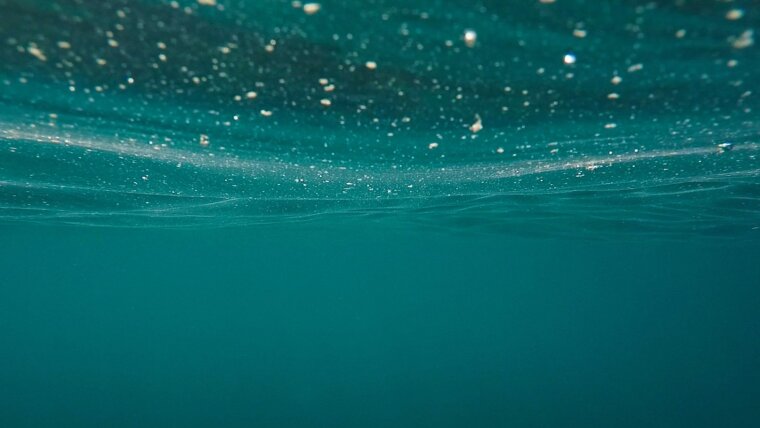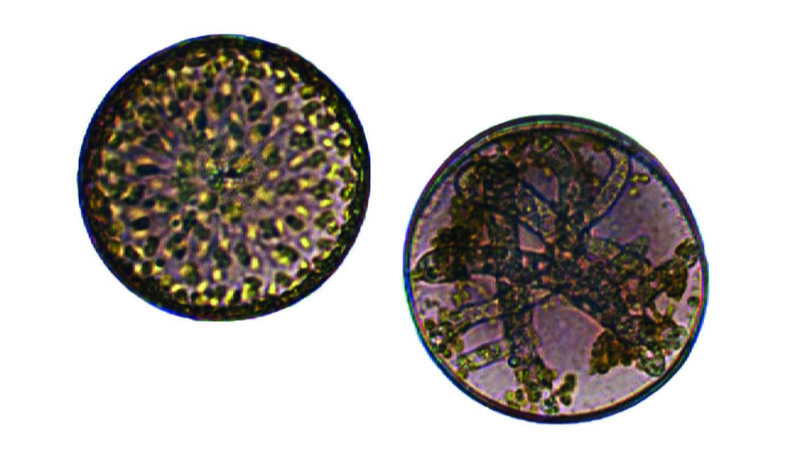
Oomycetes, also known as egg fungi, are known to cause serious diseases in plants and animals. They also affect algae, which tend to succumb to the infection. A team of researchers from Jena and Frankfurt/Main have managed to shed light on the biochemical fungal attack and how exactly the fungi kill the algae.
Whenever the sea suddenly turns bloodred or lights up in bright shades of green or brown, the cause is usually algae. We can often observe a mass proliferation of algae in the oceans, but such algal blooms attract other organisms that stop the growth of algae and sometimes even bring about the end of an entire algae population. The exact details of this process were previously u nclear.
Algal metabolism attacked and reprogrammed by fungus
In a collaborative study conducted by researchers at the Max Planck Institute for Chemical Ecology in Jena, the Friedrich Schiller University, and the Goethe University in Frankfurt/Main, the underlying mechanisms of algal death have been investigated. They have shown that a pathogenic fungus alters the metabolism of its host unicellular alga and changes it for its own purposes. It makes the algae produce bioactive substances that benefit its own propagation, while preventing algal proliferation. Ultimately, the algae are killed and parasites can thus contribute to the termination of the bloom.
For the study, the team established a laboratory system, in which a marine diatom was infected by the pathogenic oomycete Lagenisma coscinodisci under controlled conditions. This parasite is known to infest unicellular algae and prevent them from proliferating.The researchers examined the metabolism of the algae during the infection process. They found that all infected algae began to generate two chemical substances that they do not normally produce: »carbolines« from the class of substances known as alkaloids, which also include nicotine and caffeine. »We were surprised by the presence of these carbolines. Their formation was completely unknown in diatoms, but they were formed by all algal cells during the oomycete infestation,« explains Marine Vallet, one of the two main authors of the new study. Interestingly, both of these substances only benefited the oomycete; they damaged the algae and ultimately killed it.
This study was challenging because the parasites usually kill their host in a very short time and the substances are produced in very low amount in the small cells. The other main author, Tim Baumeister, describes some of the challenges that had to be overcome at the beginning of the project: »Oomycetes are known to take various forms: They are often only found as tiny spores in their host, and they sometimes do no harm at all and simply ›sleep‹ in their host. At other occasions they can cause massive killing of the algae. These processes result in a highly dynamic fluctuation of dominant species in the ocean«.
Active chemical compounds identified
Using highresolution spectrometric methods combined with microscopic techniques, the scientists were able to identify the active chemical compounds produced by a single algal cell. »One has to bear in mind that a single cell is 30 times smaller than a pinhead and that the concentration of all substances is very low. Shedding light on the chemistry occurring in a single cell is a major technical achievement,« explains Georg Pohnert. The professor of Instrumental Analytics at the University of Jena directs the Max Planck Fellow Group »Interaction in Plankton Communities«.
The scientists would now like to conduct further studies to find out how the diatoms are able to defend themselves against this pathogenic fungal attack, because they are aware that not all diatom species are equally susceptible to hostile infestation by parasitic oomycetes. However, diatoms and their various interactions with their environment continue to present researchers with numerous questions. »The sea is a treasure that needs to be protected. There are still many fantastic discoveries to be made,« concludes Marine Vallet.
By Angela Overmeyer
Healthy diatom (left) and infected diatom (right): The parasitic oomycete Lagenisma coscinodisci sucks all nutrients from the infected cell and manipulates the algal metabolism to form its own form of reproduction—a sporangium.
Image: Marine ValletOriginal-publication: The oomycete Lagenisma coscinodisci hijacks host alkaloid synthesis during infection of a marine diatom. Nature Communications (2019). DOI: 10.1038/s41467-019-12908-wExternal link
Contact:
07743 Jena Google Maps site planExternal link
